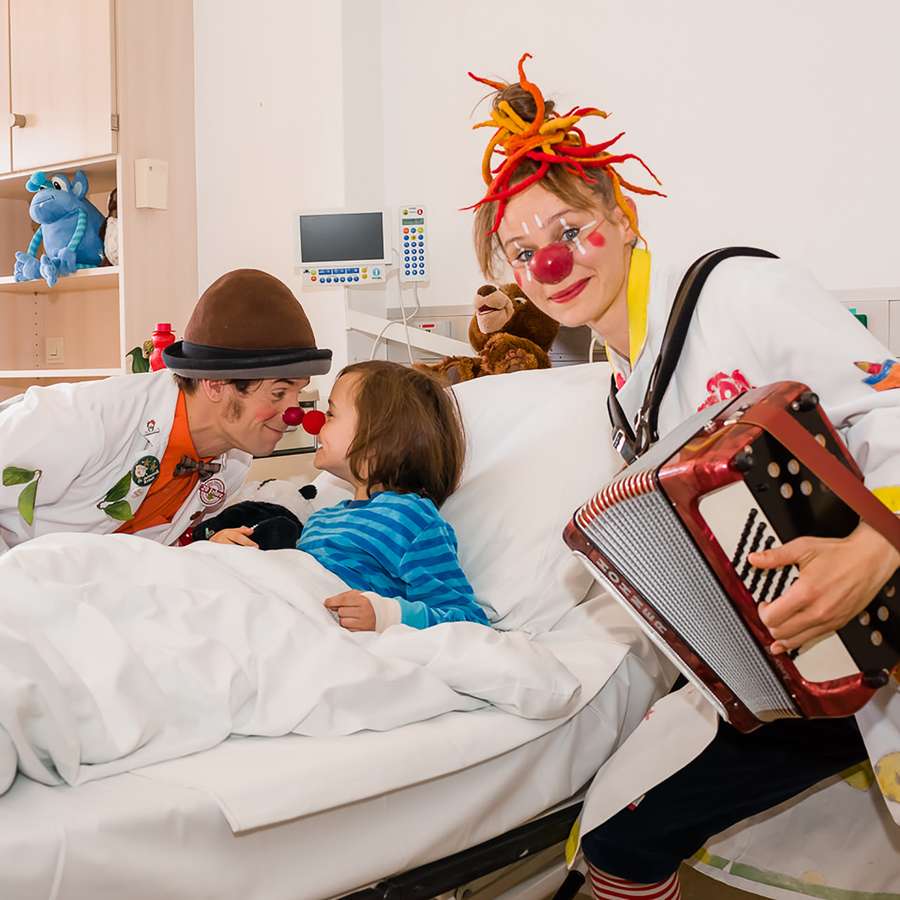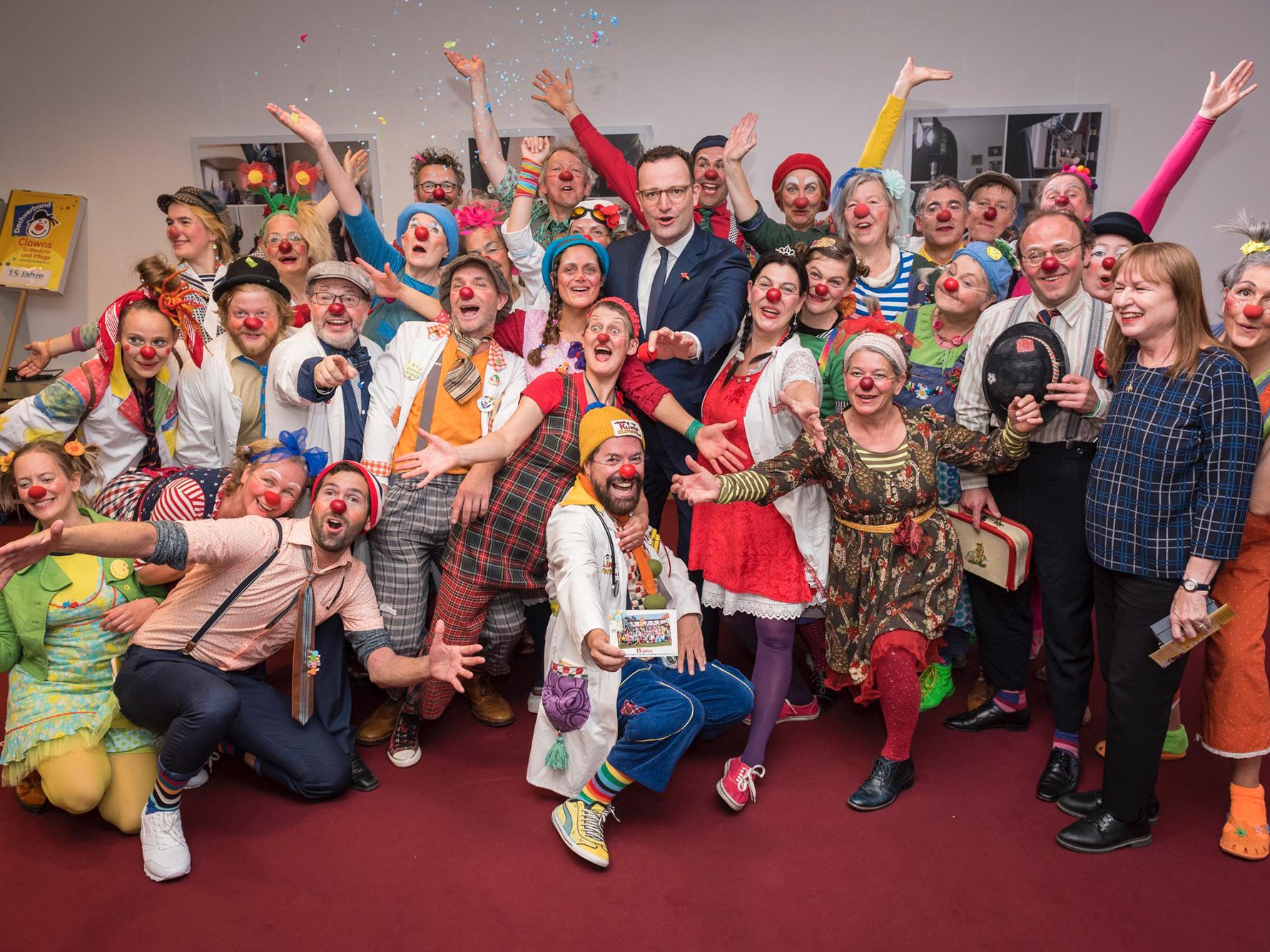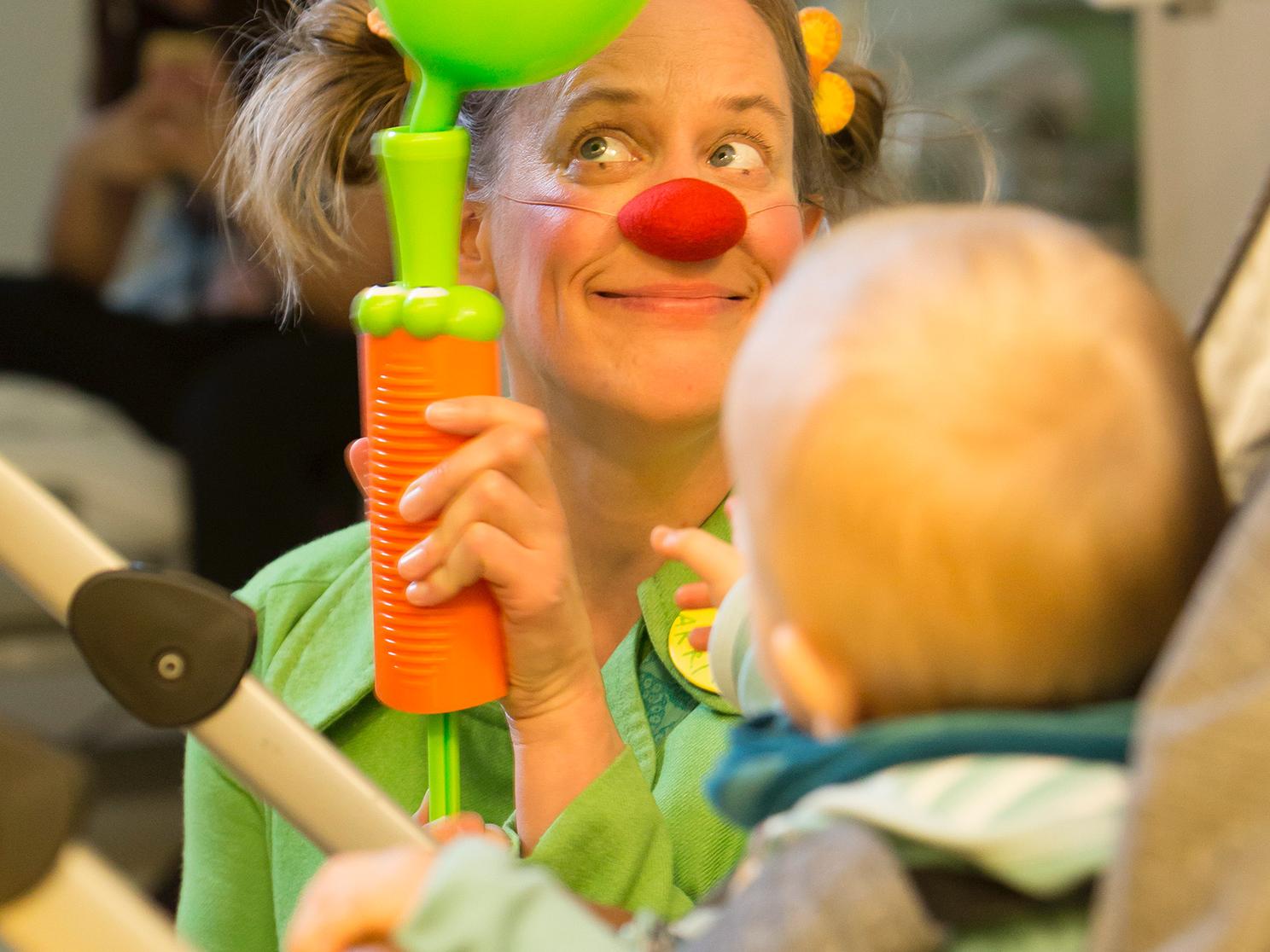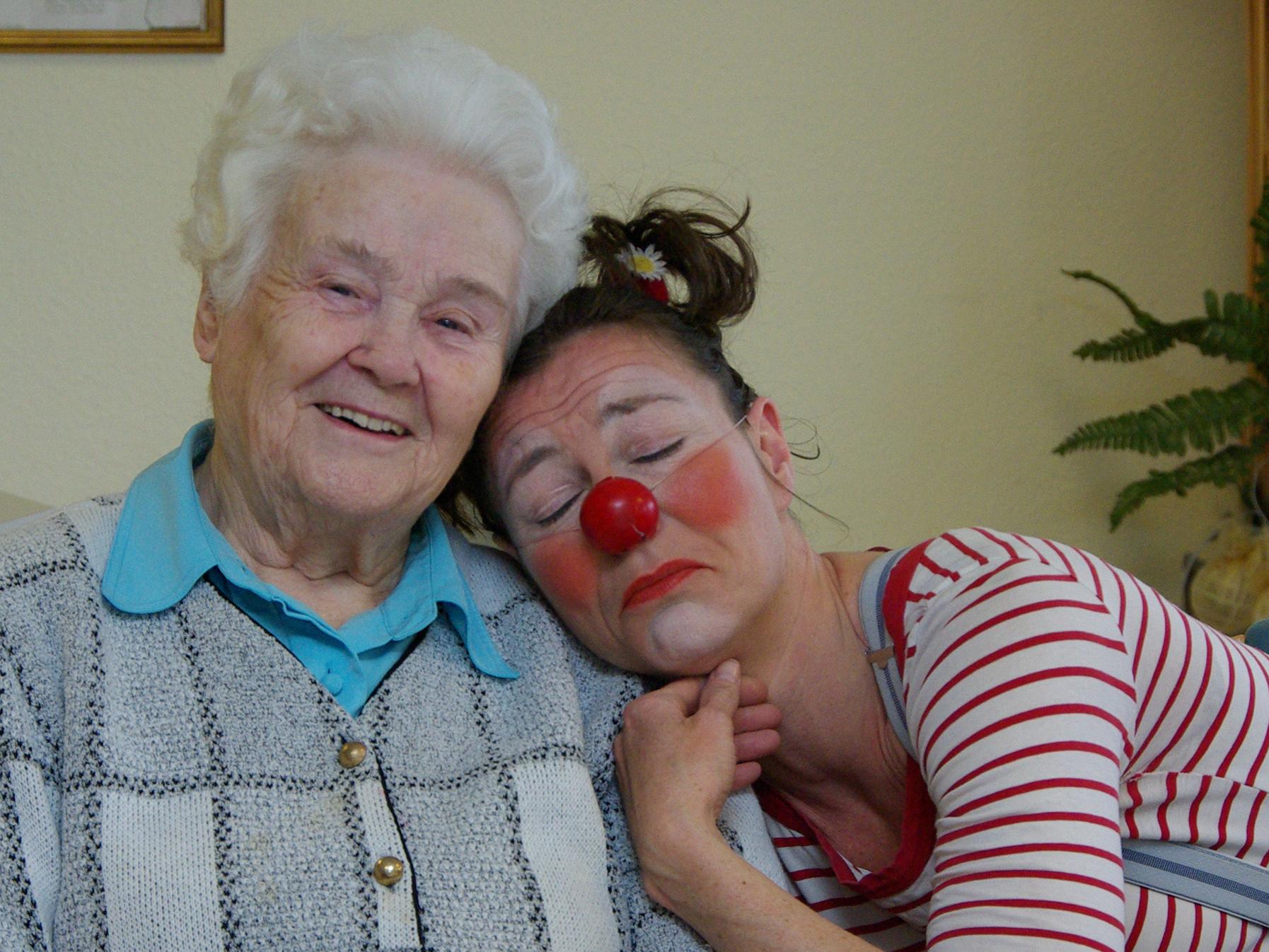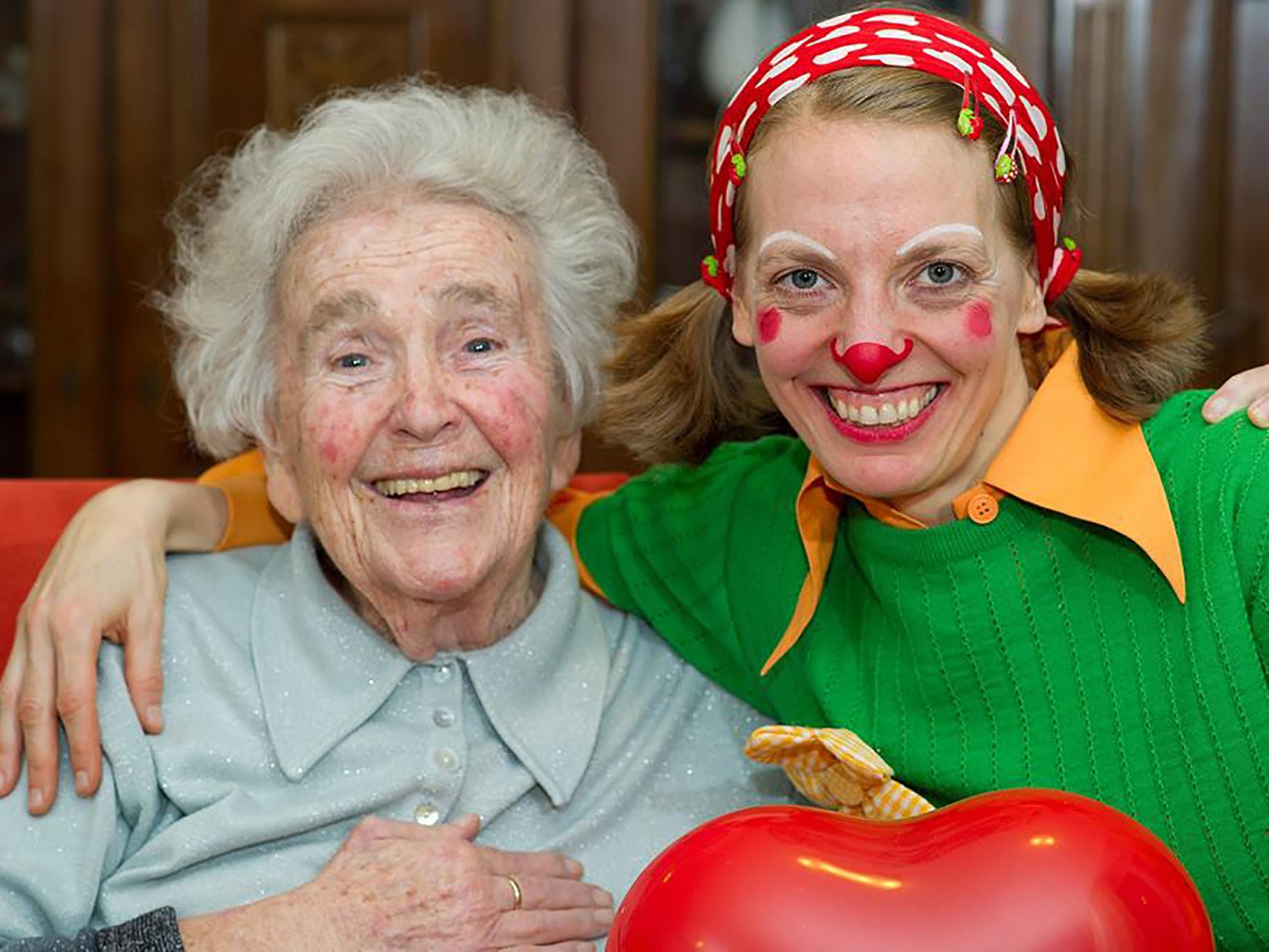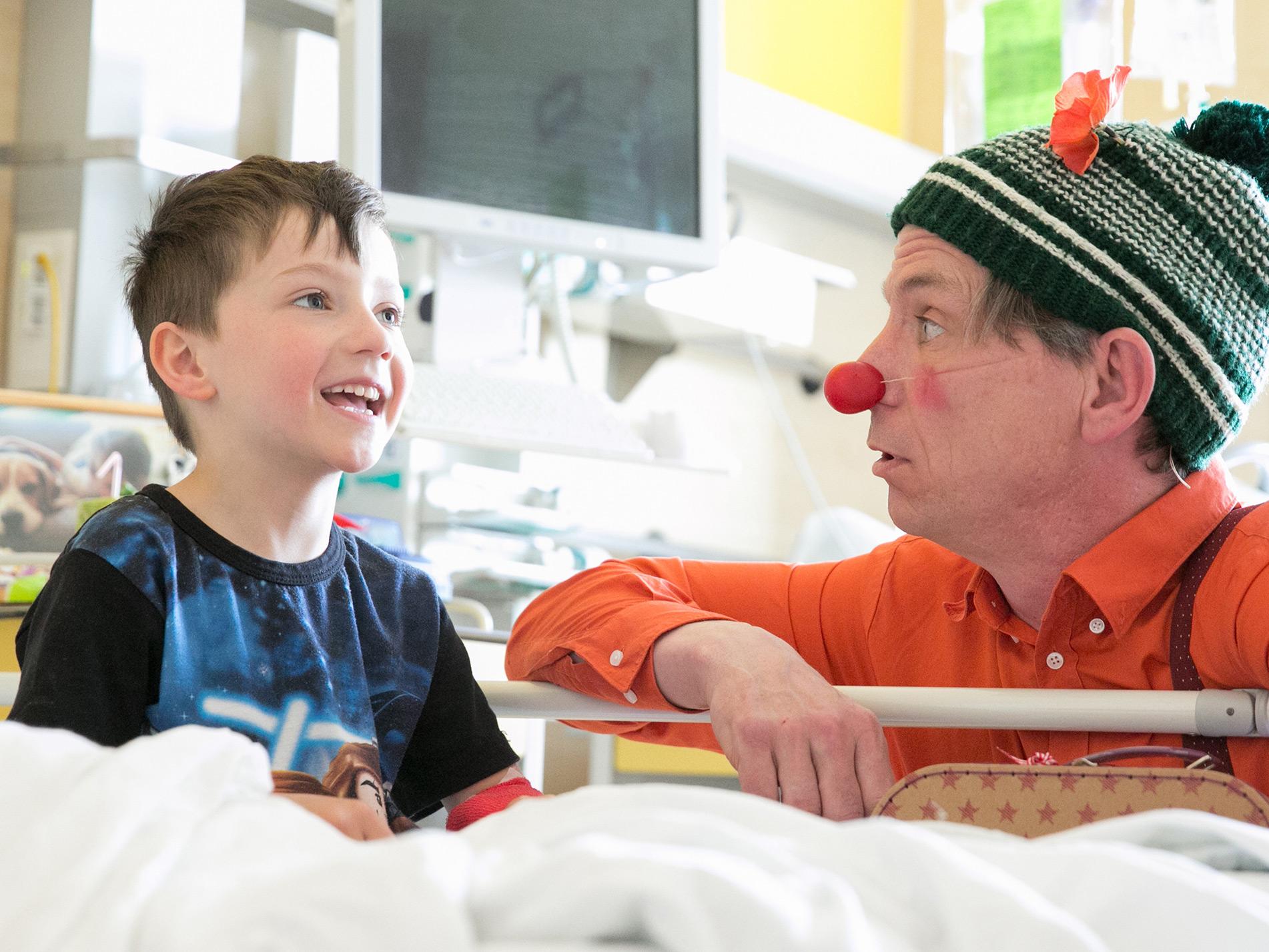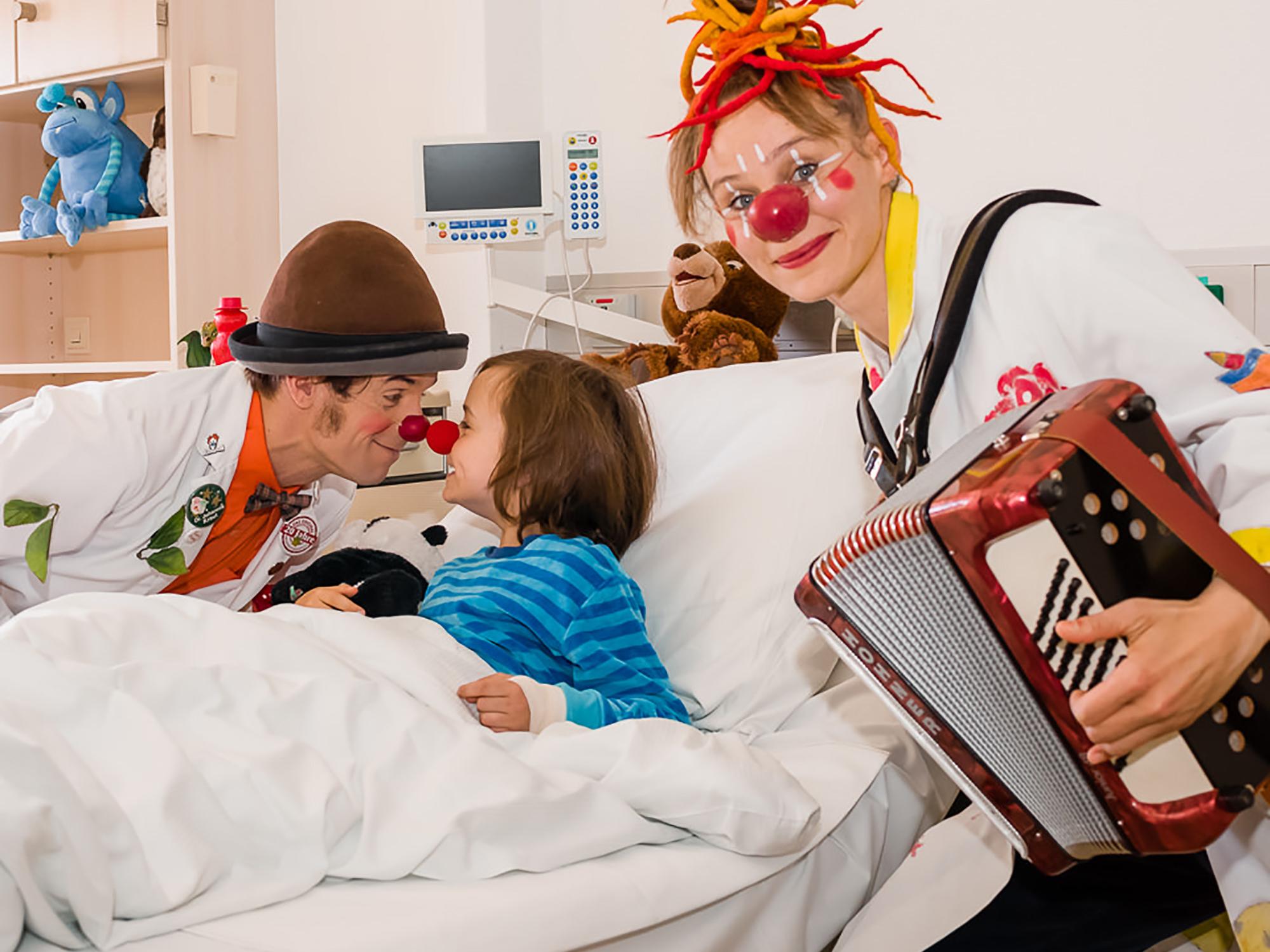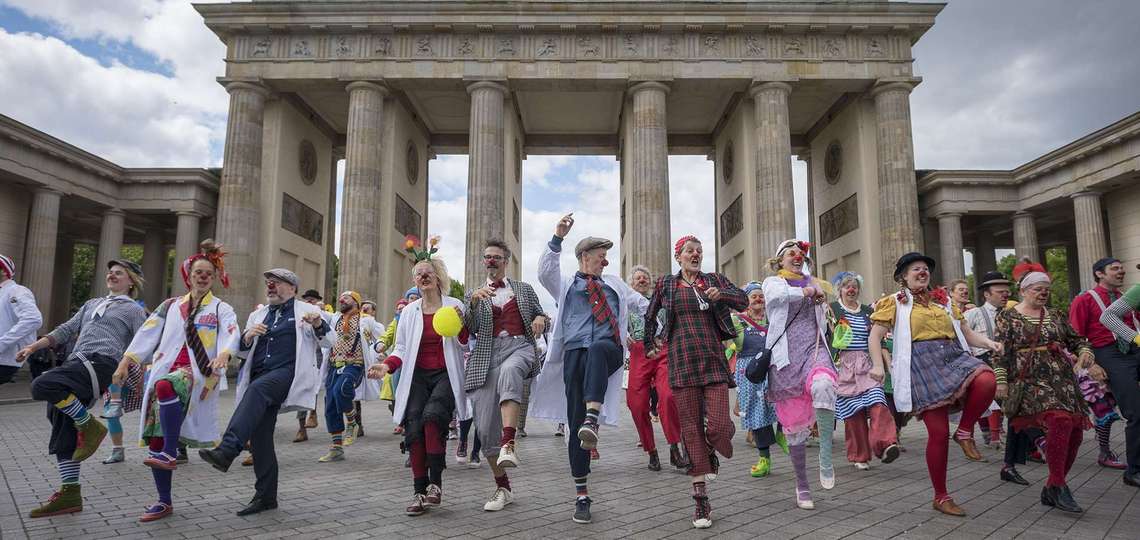
"It's also about emotions and touch."
Elisabeth Makepeace on the many tasks of clowns in medicine and care
Stiegelmeyer has been supporting the clinic clowns for years. The work of these artists, who inspire both children in hospitals and senior citizens in nursing homes, is close to our hearts. The clowns have been active in Germany for over 20 years. For 15 years there has been the umbrella association Clowns in Medicine and Nursing Germany e.V. based in Freising. Elisabeth Makepeace, chairwoman of the umbrella association, spoke with us about the different needs in nursing homes and hospitals, the challenges of the digital age and the long road to secure financing.
Mrs. Makepeace, your name is so beautiful and fits so well to the clinic clowns – is that a stage name?
I am often asked that. It's a married name, my husband is an American. But Makepeace is also a rare name in America.
Please introduce yourself and your task in the umbrella association.
More than 20 years ago I founded the association KlinikClowns Bayern (Bavaria). At that time, it was a novelty. Over the years, more and more associations joined, and the contact among each other became closer. In the year 2004 four associations united to the umbrella association, in order to learn from each other and support each other. Meanwhile we are 16 associations, two more are currently applying to join. I have been chairperson of the umbrella association since 2008. Originally, I am an actress and director. In Munich I had a small theatre for eight years. Then my children were born, and theatre is not very family-friendly. The idea of clinic clowns came from America to Europe at the beginning of the 90s and was first taken up in Austria. I originally come from Vienna and got to know the clowns there. I was fascinated by how you can combine the artistic with the social and achieve a lot. That made me decide to found KlinikClowns Bayern.
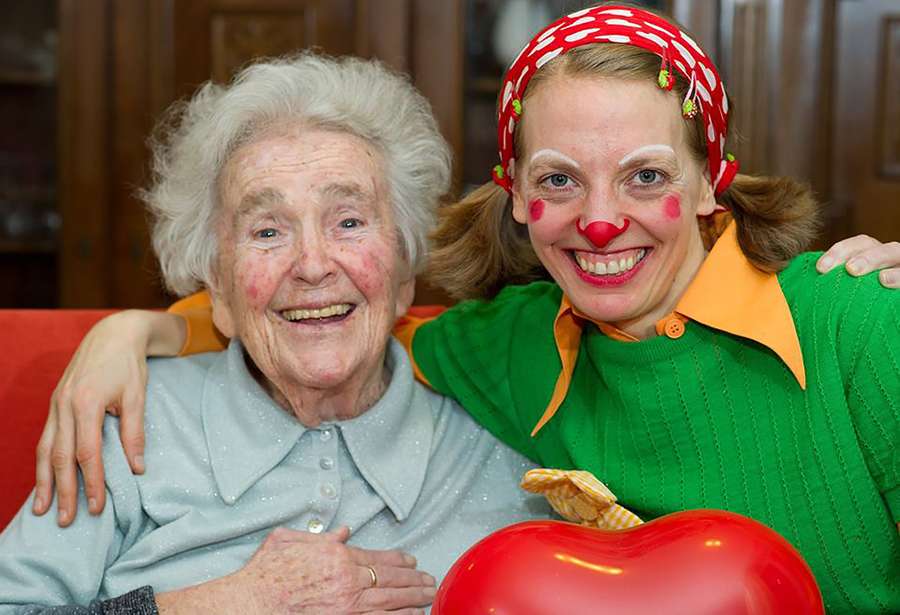
Many people know the clinic clowns through their performances for children in hospitals. But the clowns also perform for senior citizens in nursing homes. Is this a new development?
Not with us in Bavaria. When we started working in children's clinics in 1998, there was a great deal of press coverage. At that time, a nursing home director immediately approached us and said that she could imagine the clowns very well in her house as well. We hesitated for a short time, but then appeared for the first time in the nursing home in autumn 1998. Since then the demand has grown steadily. Today all member associations of the umbrella organisation are also active in nursing homes.
What is the difference between children and senior citizens as an audience?
Children are very spontaneous, go along immediately or express themselves even if they don’t like something. With older people, the reaction is sometimes somewhat delayed, but with them it is not just a matter of laughter anyway. It is important to build trust through regular visits. It is about emotions and touches in every form. For many residents of nursing homes, clowns are an outlet to give free rein to their emotions. Sometimes tears flow, but in a positive sense, because people let something go. Sometimes the clowns are also substituting for the children or grandchildren of residents.
What do the clowns do differently in a nursing home than in a hospital?
In the nursing home there is a lot of talking and story-telling, it's about touching and encountering and people like to make music. Especially in the field of dementia it is often gratifying to see everyone singing along, knowing the lyrics, opening up and thus haveing more contact with each other again.
Which trainings did the clinic clowns complete?
An artistic education is the prerequisite for applying to one of our associations. Most have an acting or clown training, many are also musicians. These are the tools you need to be able to do this work. When an artist applies to an association, a casting takes place. This involves reenacting various situations that could occur in the institutions. We see whether the clowns are team players, because they always work in pairs or in a group. When someone is accepted, he or she initially goes along "in civilian clothes" or as a third clown and gets to know the work. During this it turns out whether he or she is up to the task of also working with seriously ill, old and dying people. You have to be able to process that. We support our clowns in this, they receive supervision and coaching. Often, they are also an outlet for the worries and burdens of relatives and caregivers who also want to be supported.
You can look back on 21 years of clinic clowns – what has changed during this time? Are there fashions and trends, do you respond to technological developments?
Technology is sometimes an obstacle. There are already three-year-olds who are attached to tablet computers and no longer look up when something happens in the room. Smartphones have often replaced televisions in recent years. Even in triple rooms, children stare at their phones instead of talking to each other. Our clowns try to encourage the children to become more active again. They show that you can experience a lot with imagination. Thus, inside the room more contact and playfulness are created as well.
The associations of clinic clowns are dependent on donations. What is their financial situation?
This varies from region to region and from year to year. We never have security, we have to work hard every year to receive donations. We have been struggling for years for support from public or health insurance institutions, but that's a long way. The demand does not stop, we always get new requests and of course we want to keep existing partners as well. There are more and more organisations in the social sector that are dependent on donations, but the cake is not getting any bigger overall. We are in contact with the Federal Ministry of Health, which shows us a lot of goodwill. We hope that we can continue to do a good job and improve our quality.

